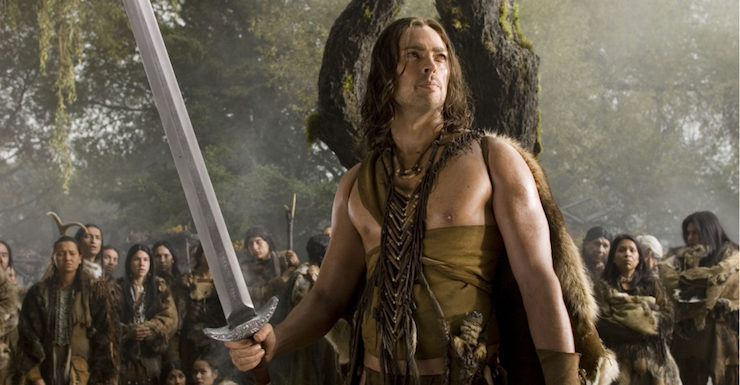A few weeks ago I ranked my personal top-five Beowulf films, and among them was Outlander, a semi-obscure 2008 alien-meets-Beowulf film starring Jim Caviezel. It ranked #3 not because I think it’s a very good film but because Beowulf films (outside of the amazing 13th Warrior) generally suck for one reason or another.
Anyway, every time I try to think of Outlander I find myself confusing it with Pathfinder, a 2007 film directed by Marcus Nispel starring Karl Urban. Since I was thinking about the one, I started thinking about the other and, well, here we are.
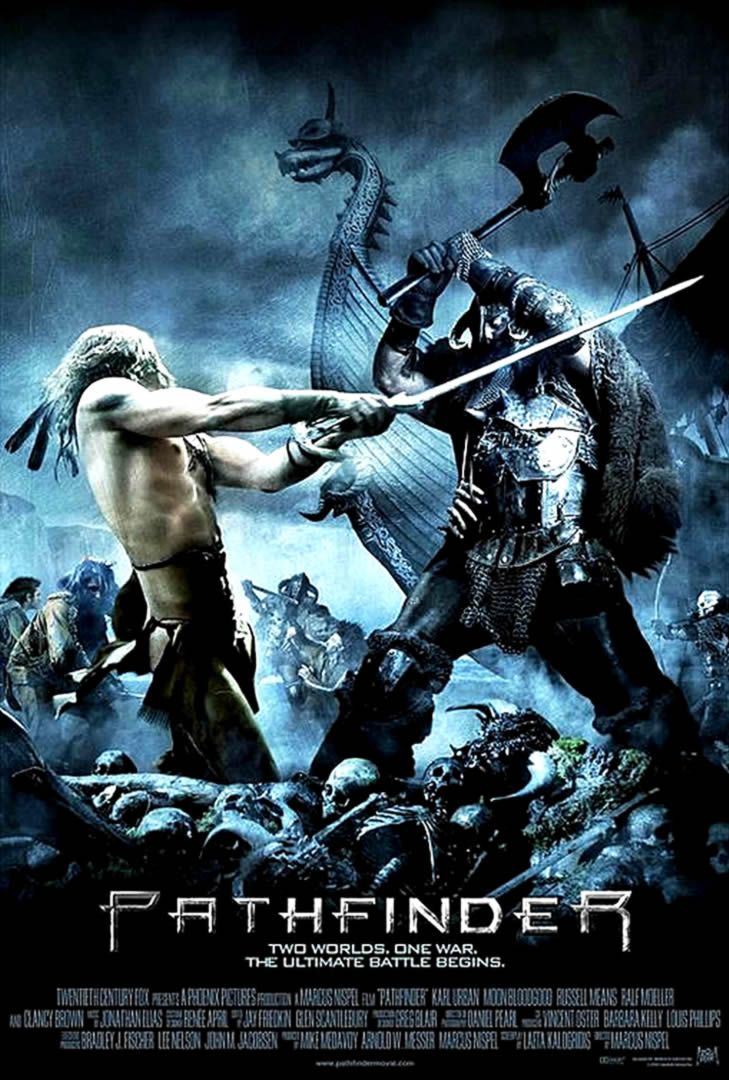
Pathfinder is loosely (oh so very loosely) based upon a historical fact: around the year 1000, Vikings made their way from Greenland to the shores of North America. They established a settlement, explored a little, and very certainly gathered wood that would be of tremendous use in Greenland. In time, however, they ran afoul of Native Americans whom they termed skraelings and were forced to abandon their settlement.
I say Pathfinder is “loosely based” on this because, well, the movie is pretty much full of crazy. Shovels and shovels of crazy.
Before I get to that, though, let’s go over what’s good about the film.
- It’s medieval-ish. It’s a low-bar, I know, but I almost always enjoy quasi-medieval things at least a little.
- For most of the movie the Vikings speak Icelandic, which is a decent approximation of Old Norse. Score.
- There are a couple of cool action pieces, including one where our hero slides down a mountainside on a Viking shield while fighting Vikings on Native American sleds.
I’m not kidding. It’s just…barrels of crazy.
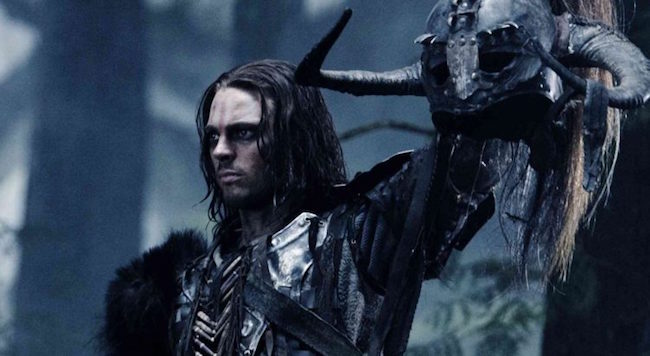
Let’s start with the movie’s plot. (Deep breath.)
A Native American woman is (of course) peacefully roaming a forested coastline when she stumbles upon a hulking, half-submerged ship. Upon investigation she finds it is full of dead people … except one traumatized young boy. He’s a Viking lad who was whipped and then left for dead by his Viking father because he refused to slaughter a native child. The Native American woman adopts him and names him Ghost.
Back home, the Native American leaders debate keeping Ghost around, but their “Pathfinder” (Russell Means, who is forever my Chingachgook because I watched Last of the Mohicans like a billion times) says there’s a spiritual tie between the boy and a prophecy.
Sadly, you can probably already see where this plot is heading.
Ghost grows up to be a strapping Karl Urban. And though he’s ostracized by many of the natives because he looks different, he’s still strapping Karl Urban.
Lo and behold, the Vikings return and attempt to eradicate the Native Americans in the most gruesome fashion they can imagine, including a lot of head-crunching, stake-burning, and one drawn-and-quartering. (I watched the film in its “Unrated” version, which clearly goes for “plus-plus-gore” throughout.)
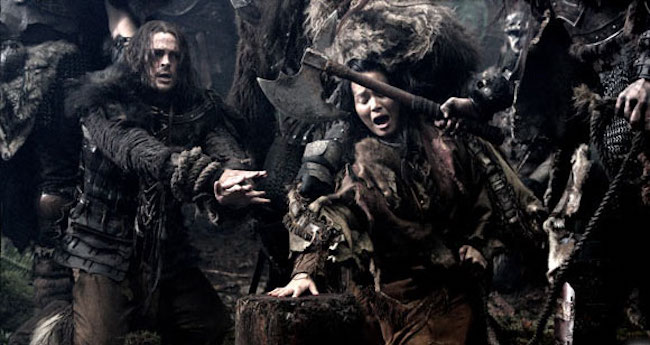
All would be lost, every native horrifyingly slaughtered by the inexorable might of the bulked-up, iron-armored tanks that are the Vikings … except that the poor besieged Native Americans are saved from their certain doom by the unmatched bravery and cleverness of the one white guy.
Naturally. I mean, ultimately, this guy’s from Norway, amirite?
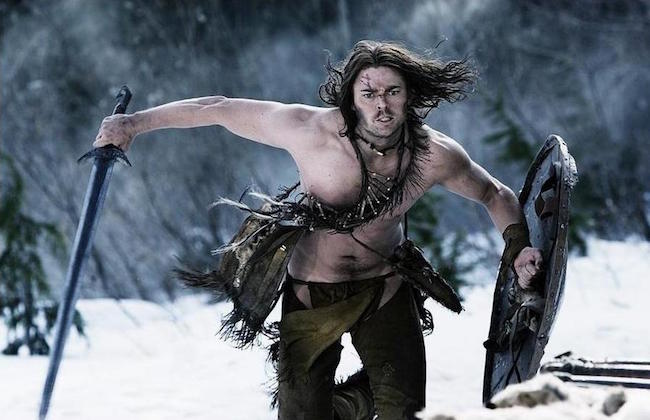
Oh, and did I mention that the hot native girl — played by Moon Bloodgood and named, um, Starfire — falls in love with him? Of course she does. To her credit, Bloodgood does a good job trying to sell Starfire’s feelings about Ghost, but there’s only so much she can do. Here’s the moment of their connection:
Starfire: There are two wolves fighting in each man’s heart. One is Love, the other is Hate.
Ghost: Which one wins?
Starfire: The one you feed the most.
[they kiss]
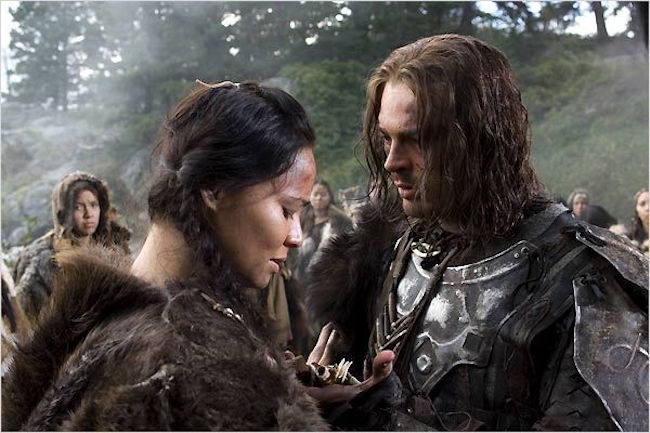
I want to say that this is pretty much a White Savior narrative at its worst—but I confess I’ve seen far, far worse. I mean, on the plus side, the film tries really super hard to make the Vikings (outside of strapping Karl) into the most awful dudes imaginable. The actors playing the main roles amid the evil Vikings — Clancy Brown and Ralf Moeller — have a lot of fun buying into these roles: they are intent on nothing less than the total annihilation of the Native Americans.
Oh, Gunnar (Clancy Brown) says something about this being necessary so that they can bring in more settlers, but given all the gleeful gore, one gets the sense that colonialization isn’t really on his or anyone else’s mind. It’s more about genocide, plain and simple.
Historical Vikings didn’t really operate like this, for what it’s worth. Yeah, they were hardly turn-the-other-cheek folks, but they generally weren’t interested in all the work involved in systematically engaging in an elaborate genocidal colonizing spree. The Viking philosophy was more akin to “get in, get what you need, and get out.”
Yet what this movie details is, make no mistake, quite elaborate and systematic. What we see at the beginning shows that they’ve come to the New World in absolutely massive ships with deep and wide cargo holds that are totally unlike Viking longboats. Indeed, though a few long-shots show longboats, the ship that baby-Urban is found in is like a Portuguese caravel (think Columbus’ Nina, Pinta, and Santa Maria), which makes sense: they’re not just bringing men and supplies but also teams of warhorses.
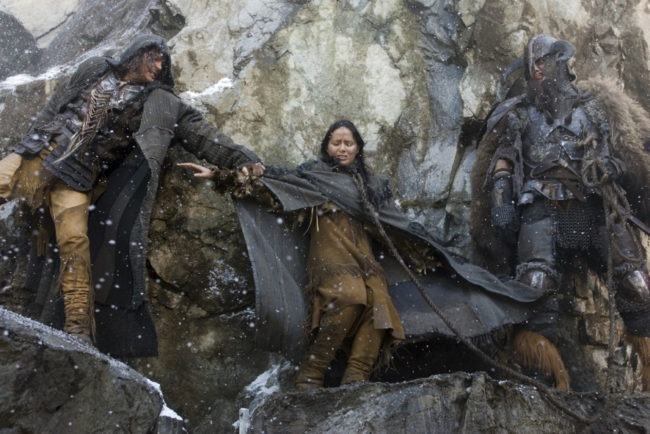
And oh so much armor. Armor for the men. Armor for their horses. Armor for their armor.
It’s mind-boggling how much plate these guys have. It’s like Gimli’s wet dream. And yeah, it looks cool in its way, but at a certain point it’s pretty much absurd to imagine the cost of having each Viking built into a lumbering tank, the weight of it, the feasibility of living in the get-up (they never take it off), and the sheer unhistorical nature of the whole thing.
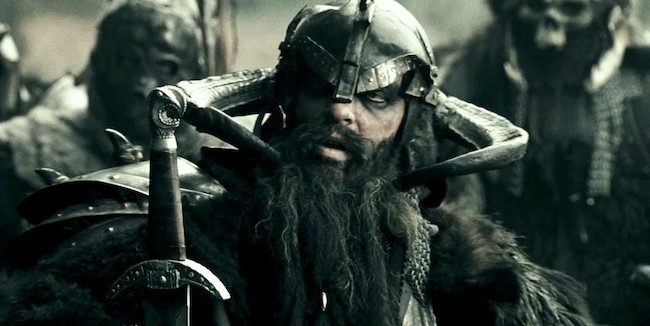
The Viking armaments are equally insane. Everything the Vikings carry has some kind of bling to it: blades are etched, edges are ground into menacing shapes (adding breaking points to the metal, huzzah!), spikes are stuck everywhere they can fit, handles are intricately designed … these are apparently the richest Vikings in history, with some kind of twisted Martha Stewart as their blacksmith.
And then there’s the flails. I want to blame this on Hollywood, but the problem is much bigger than that: I know a lot of well-meaning fantasy writers who just love their flails. Want some easy shorthand to convey that a fellow is menacing and cruel and evil? Give him a spiked ball-and-chain.
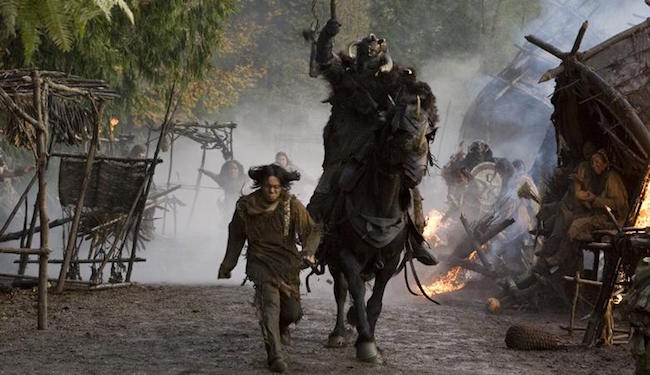
I get it. I feel you. But there are so very many things wrong with the use of these weapons in a real military context that many of us aren’t sure they were used for anything more than ceremony. So please try something else? Pretty please?
Mike’s Medieval Ratings
Authenticity: 1 of 10 spiked somethings
Just Plain Fun: 1 of 2 horns on a helm
 Michael Livingston is a Professor of Medieval Culture at The Citadel who has written extensively both on medieval history and on modern medievalism. His historical fantasy trilogy set in Ancient Rome, The Shards of Heaven, The Gates of Hell, and the newly released The Realms of God, is available from Tor Books.
Michael Livingston is a Professor of Medieval Culture at The Citadel who has written extensively both on medieval history and on modern medievalism. His historical fantasy trilogy set in Ancient Rome, The Shards of Heaven, The Gates of Hell, and the newly released The Realms of God, is available from Tor Books.










